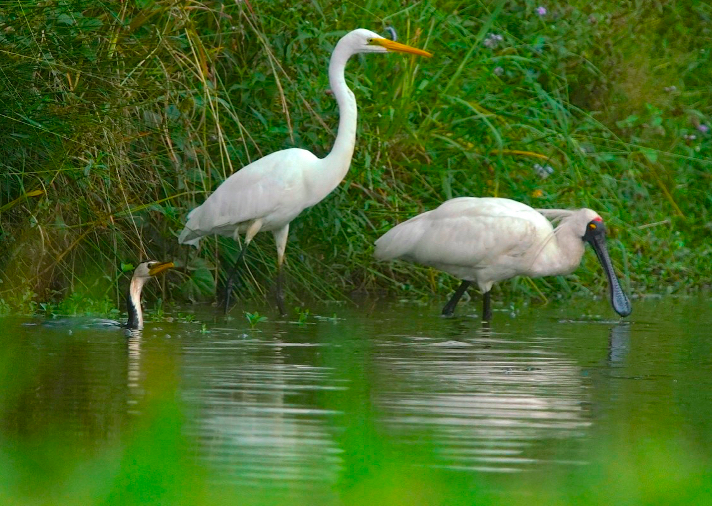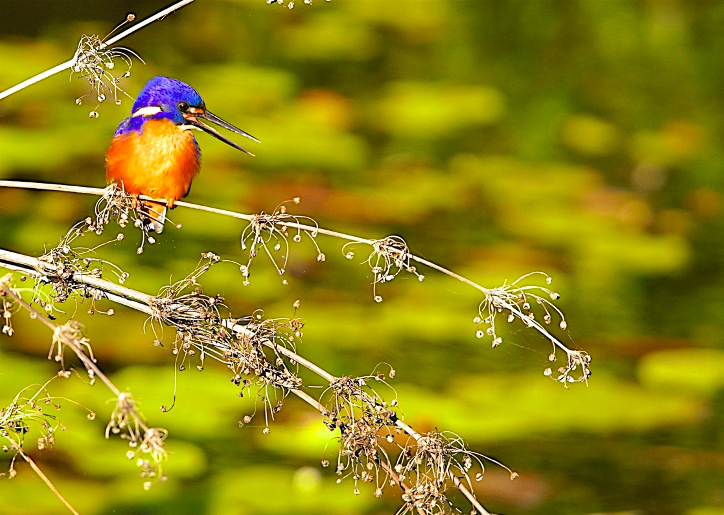The Moggill Creek Catchment is not well off for water to supply the district’s wildlife. Apart from the Gold Creek Dam and Gold and Moggill creeks there is little other permanent water. Even then the upper parts of Moggill Creek have dried out in recent droughts. The non- permanent creeks dry out rather quickly as most have porous, rocky bases in the upper reaches.

Little Pied Cormorant, Great Egret and Royal Spoonbill attracted to a well planted farm dam. Photo: Ed Frazer
There were a few farm dams left over from the dairy and fruit farms in past times and recently a few dams have been built on private acreage. Unfortunately sites are often difficult and many have leaking problems and their water holding capacity is small. To make the most of what is available to encourage the wildlife and especially the small birds, reptiles and mammals that are dependant on reliable water sources, we need to improve the habitat around those existing water sources.
Dams with clear areas around their shores are only attract a range of aggressive birds such as Magpies, Butcherbirds, Magpie Larks, Ibis and Kookaburras. The same is true of the creeks where they have been cleared of overhanging vegetation. Ideally creeks should be planted with overhanging trees such as Sandpaper Figs, Mellalucas and creek Lillipillies. The trees should be reinforced with extensive plantings of shrubs, and patches of sedges, grasses and Lomandra.
Farm dams need similar treatment, but only the high side of the dam and where the water comes in need to be planted. Wattles make a useful planting higher on the banks and Grevilleas also do well around dams. Planting in the dams should include some broad-leaved plants for the frogs as well as sedges. Be careful with water lilies particularly if the dam is shallow. Avoid Hardy waterlilies and use Tropical Waterlilies and Night Bloomers as they don’t spread and choke out the dam.
If you establish a good habitat around the dam or creek side you will be rewarded by a large range of beautiful birds such as Azure Kingfishers and a wide range of water birds, small mammals such as echidnas and water dragons. A well plated dam or creek side with a good tree canopy will go a long way to keeping out invasive water weeds. It will also contribute to making the creek a more suitable habitat for Platypus.


